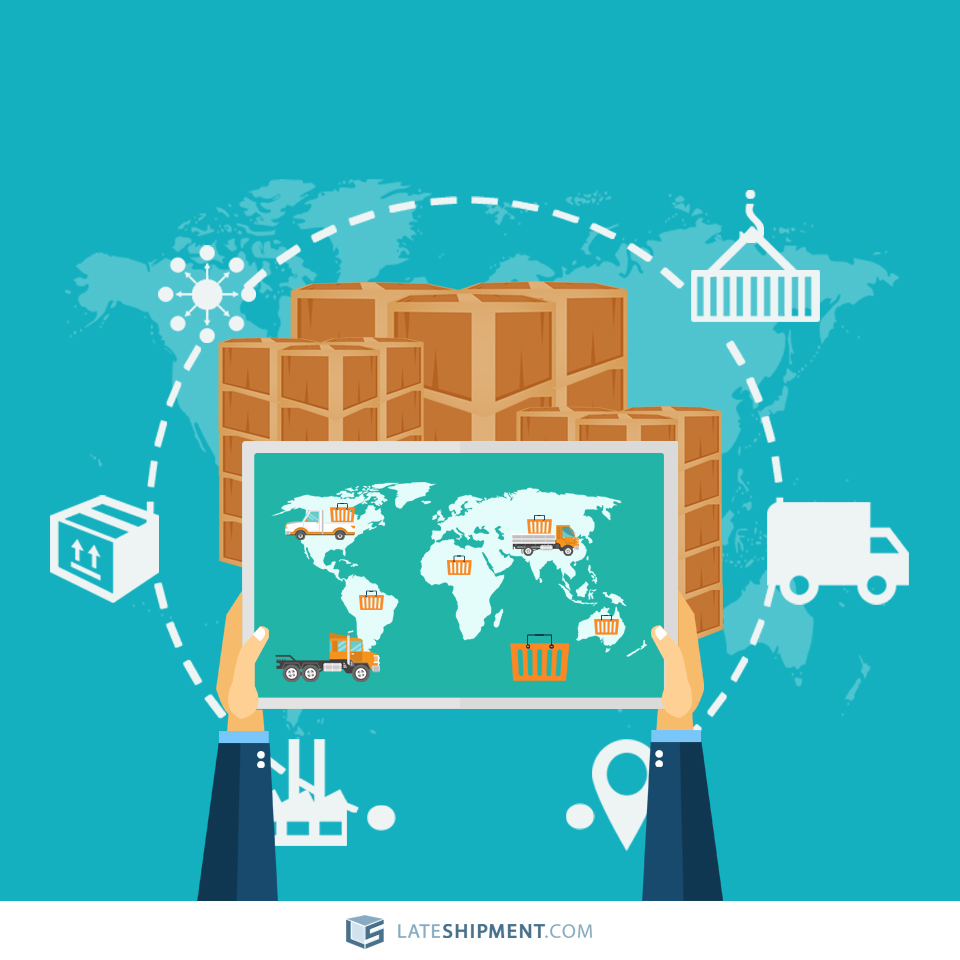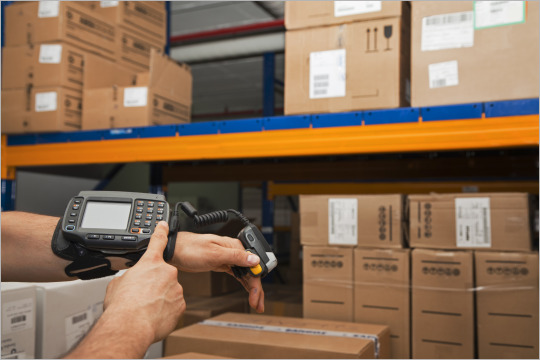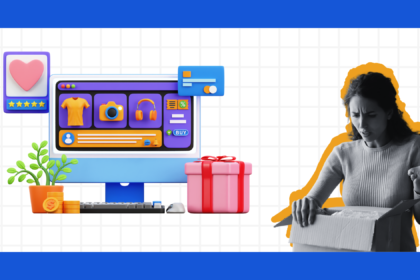Imagine a world where your e-commerce shipments flow seamlessly from your warehouse to your customer’s doorstep. No lost package, no shipment delays—just hassle-free, smooth, predictable logistics powered by technology driving your customer experience and operational efficiency.
Digital logistics is revolutionizing the e-commerce supply chain, making your operations smarter, faster, and more transparent! With AI, IoT, and real-time tracking taking center stage, e-commerce businesses are ditching manual processes and integrating streamlined, data-driven decision-making.
Don’t believe us? The numbers prove it—the Digital Logistics Market size is expected to attain a valuation of USD 73.99 billion by 2030, at an impressive CAGR of 16.43%. This is when the space is currently valued at USD 34.58 billion.
It’s safe to say that logistics is getting a high-tech makeover—and e-commerce businesses that don’t sign up can risk biting the dust. So, what exactly is digital logistics? Let’s dive in!
Definition of Digital Logistics
Digital Logistics involves automating and digitizing the processes related to the movement of shipments. All the operations that entail repetitive manual effort or rely on pen and paper pose an opportunity for automation. Some processes where digital logistics thrives include:
- Transportation management
- Warehouse management
- Customer communication
- Shipment tracking
- Supply chain forecasting and reporting
- Inventory management
To better understand digital logistics, let’s compare it to traditional logistics. Firstly, where traditional logistics depends on clipboards, pen-and-paper, and spreadsheets, digital logistics instead relies on technologies such as applications and web-based systems.
Secondly, the stakeholders in traditional logistics are often disconnected from each other, causing siloed data and information. You see, your warehouse team might have a separate workflow that your fulfillment team doesn’t have access to. Digital logistics eliminates this issue by giving every last stakeholder in the logistic network visibility into all processes. Not only that, but it also offers real-time inventory management and valuable analytics that help you enhance your team’s decision-making capabilities.
Key Technologies in Digital Logistics
So, we’ve discussed what we mean by digital logistics, but what powers it? What are the technologies at play that truly help streamline your supply chain management? Well, here’s a look behind the curtain:
Internet of Things (IoT)
This refers to a network of interrelated connected devices that exchange data with each other and the cloud. This technology lies at the core of digital logistics and allows e-commerce businesses to collect data through a production network and gain visibility into their logistics process.
For instance, sensors on packages allow you to gain insight into the temperature, humidity, and location of your package, ensuring it is safely delivered to customers on time.
Big Data Analytics
Big data analytics is another tool that is revolutionizing digital logistics by helping e-commerce businesses extract valuable insight from their operational data. With advanced algorithms and tools, businesses can optimize supply chains, predict and prepare for demand, and, most importantly—make data-backed decisions.
This doesn’t just drive your efficiency and reduce risks but also enables quicker responses to evolving customer demands.
Machine Learning and Artificial Intelligence
Machine Learning (ML) and Artificial Intelligence (AI) have become increasingly intrinsic to supply chain tasks and strategies. ML, along with AI-powered calculations, enables research and allows businesses to leverage chatbots and remote assistants with uninterrupted client links.
Not only that, but these technologies can also help upgrade stockroom works by automating stock monitoring.
Blockchain Technology
Blockchain technology refers to a cutting-edge database mechanism that facilitates transparent information sharing within your business network. A blockchain database essentially stores your data in blocks that are linked to each other in a chain-like structure. Its unique mechanism helps gain transparency into logistic transactions without compromising on security.
This technology enables you to track the origin as well as the journey of your shipments, facilitating smoother customs clearance processes and reducing delays.
Benefits of Digital Logistics
The fact that the digital logistics industry is expected to grow at a whopping 16.43% comes as no surprise if we look at what it brings to the table. Here are the benefits of integrating it:
Automates Repetitive Tasks to Give Your Team More Time to Focus on Core Operations
Easily one of the foremost benefits of any technology is automating repetitive tasks so that your team can spend time on tasks that actually require their grey matter. Integrating digital logistics into your supply chain operations doesn’t mean replacing your team but rather empowering them to leverage data and advanced business tools to make strategic improvements and drive your platform’s goodwill and customer experience.
Drives Efficiency
Digital logistics enhance your efficiency by automating key processes like document handling, load planning, and carrier selection. This reduces manual effort, boosts productivity, and ensures faster order fulfillment.
For instance, automated freight rate management significantly cuts quotation time, enabling quicker responses and higher sales conversions. By streamlining operations, digital logistics empowers e-commerce businesses to meet customer demands quickly, accurately, and cost-effectively.
Enhances Your Customer Experience
More than 70% of customers say order tracking is critical to their online shopping experience. In other words, if you can’t give your customers an update on where their package is, they might hold it against you. Today’s customers value real-time shipment notifications, quick and hassle-free issue resolution, and a smooth post-purchase experience—everything that you can offer by integrating digital logistics into your operations.
Drives Shipping Process Resilience
Automating and digitizing your supply chain logistics help you optimize it and predict disruptions and possible bottlenecks. As a result, you can prepare and even mitigate them before they compromise your operational efficiency. And this added advantage enables you to secure and strengthen your shipping process for maximum productivity.
Gives You Access to Valuable Data
As an e-commerce business operating in the 21st century, you know data is everywhere. All you need to do is collect it, store it, and make sense of it. Tapping into this data means uncovering valuable business intelligence that can help you get ahead of your competitors and drive business growth.
With Digital logistics, you can collect this data and extract insights into customer behavior, goals, and preferences to create informed campaigns that drive your conversion rate and customer satisfaction.
Reduces Costs of Shipping and Fulfillment
Digital logistics reduce shipping and fulfillment costs by optimizing inventory placement and streamlining operations. By leveraging data-driven insights, e-commerce brands can strategically store products closer to customers, ensuring faster deliveries while minimizing storage and transportation expenses.
This doesn’t just enhance customer satisfaction but also reduces working capital costs, making operations more efficient and cost-effective in an increasingly competitive market.
Facilitates Real-Time Tracking and Visibility
Digital logistics leverage technologies such as IoT, cloud-based tracking tools, and GPS to help you monitor the movement of your shipments in real time. This intelligence helps you keep your customers informed of their packages, which, as previously discussed, is getting increasingly crucial for customer experience.
Further, real-time tracking also gives you visibility into processes that can facilitate proactive issue resolutions and drive operational efficiency if wielded well.
Encourages Continuous Improvement
Gaining insight and visibility into your logistics processes by way of digital logistics tools can help you recognize areas of improvement and friction points that, if addressed, can improve your efficiency. You see, with traditional logistics, data is siloed, and insight is limited, making it harder for teams to identify problems before they become large enough to compromise overall efficiency. However, with digital logistics, this issue is effectively addressed by ensuring complete transparency and visibility.
Challenges of Implementing Digital Logistics
Going digital sounds great—until you hit the roadblocks. While digital logistics offers game-changing benefits, implementation comes with its fair share of challenges. From cybersecurity risks to tangled tech integrations and ever-evolving regulations, e-commerce businesses must navigate a complex maze before reaping the rewards. Let’s break it down.
Data Privacy Issues
Data privacy is a major challenge in digital logistics, as vast amounts of sensitive information are collected and processed. Protecting customer data, shipment details, and operational insights from breaches or misuse requires robust cybersecurity measures.
Compliance with data regulations adds complexity, making implementation more demanding. Striking the correct balance between security and innovation is crucial to ensuring trust, efficiency, and long-term success in digital logistics.
Cybersecurity Threats
Gartner has predicted that 45% of global businesses will be affected in some way by a supply chain attack in 2025. Cybersecurity threats pose a significant challenge in implementing digital logistics, as increasing connectivity exposes supply chains to cyber risks.
Data breaches, ransomware attacks, and system disruptions can compromise sensitive information and halt operations. Strengthening cybersecurity with robust encryption, real-time monitoring, and proactive risk management is essential. A secure digital infrastructure ensures seamless logistics, protecting businesses from cyber threats while maintaining efficiency and trust in the supply chain.
Technology Integration
Integrating your digital logistics technologies like ML, AI, blockchain, and IoT is imperative to smooth operations. However, it can be significantly complex. Legacy infrastructure limitations, interoperability issues, and compatibility concerns can come in the way of smooth tech integration. E-commerce businesses must plan ahead and address integration issues before introducing new tools to their tech stack.
Dependence on Technological Infrastructure
Dependence on technological infrastructure poses a key challenge in digital logistics. Outdated systems have limited IT resources, and risks like cyber threats or natural disasters can disrupt operations.
Ensuring your business continuity requires strong investments in modern IT infrastructure and disaster recovery plans. Without these, e-commerce businesses can struggle with downtime, inefficiencies, and security vulnerabilities, impacting overall supply chain performance.
Future of Digital Logistics
The digital logistics space is only just establishing itself. And while the feat it’s achieved is impressive, it is by no means its complete potential. Here are some of the trends that we can expect from digital logistics in the coming time:
Autonomous Vehicles and Robotics
Self-driving trucks and robotic warehouse assistants are set to revolutionize logistics. These innovations will streamline operations, reduce human error, and enhance efficiency. With AI-driven automation, businesses can expect faster deliveries, lower costs, and improved safety—ushering in a new era of smart logistics.
Drone Delivery
Drones can transform last-mile delivery, making shipping faster and more efficient. As technology advances, drones will handle lightweight packages with precision, reducing congestion and carbon emissions. This futuristic approach will help e-commerce businesses make quicker deliveries, especially in remote areas, redefining the speed and convenience of logistics.
Predictive Analytics
AI-powered predictive analytics will enable logistics firms to anticipate demand, optimize routes, and prevent supply chain disruptions. By analyzing vast amounts of real-time data, e-commerce businesses will make smarter, faster decisions—enhancing efficiency, reducing costs, and ensuring seamless operations in an increasingly complex global market.
Eco-friendly Practices
Sustainability will be a driving force in logistics in the coming years, with companies adopting electric fleets, smart routing, and carbon-neutral strategies. Innovations in biodegradable packaging and energy-efficient warehouses will help reduce the industry’s environmental footprint, aligning logistics with global sustainability goals and consumer demand for greener solutions.
Digital Twins
Digital twins—virtual replicas of physical supply chains—will revolutionize logistics by allowing real-time monitoring and simulation. Companies will use these AI-powered models to identify inefficiencies, test strategies, and predict potential disruptions, leading to smarter, data-driven logistics operations with minimal risk.
Conclusion
Digital logistics isn’t just a fickle trend—but the future of supply chain management. With IoT, AI, and automation redefining shipping efficiency, e-commerce platforms across the world are opening their arms to these technologies like a long-lost brother returning home.
That said, the path to full-scale digital transformation is not free of its thorns—data security, regulatory compliance, and integration headaches can slow down your speed as you embrace this disruptive new tool. However, given its undeniable benefits of driving efficiency, enhancing customer experience, and reducing costs, the journey is worth it.
As digital logistics evolves, businesses must also rethink the post-purchase experience. After all, what’s the point of a high-tech supply chain if customers are left frustrated by late deliveries and radio silence? That’s where LateShipment.com comes in. Our Post-Purchase Experience software ensures real-time delivery tracking, proactive issue resolution, and automated refund claims for delayed shipments, helping e-commerce businesses turn shipping chaos into customer satisfaction.
The future of logistics is here. Book a demo today to get on board!








